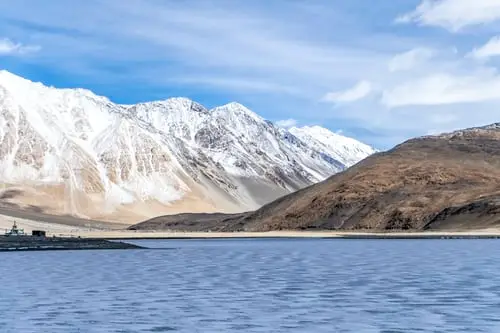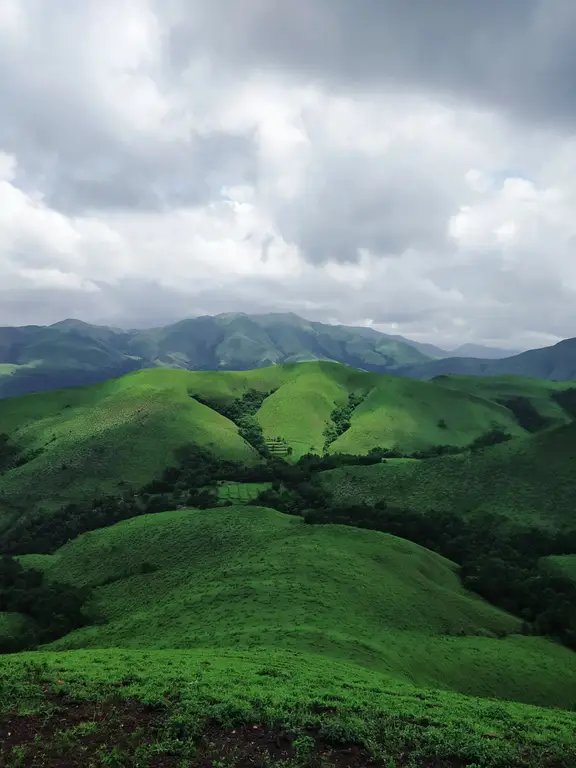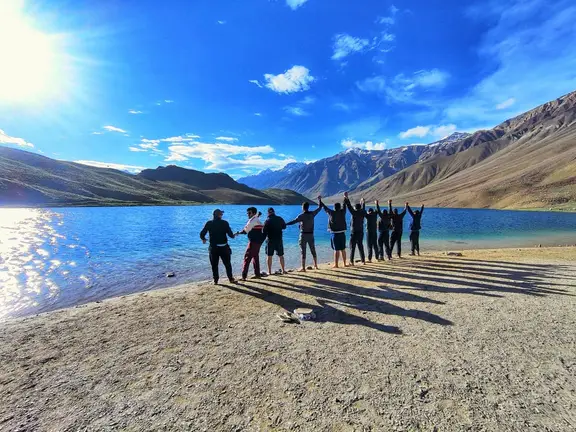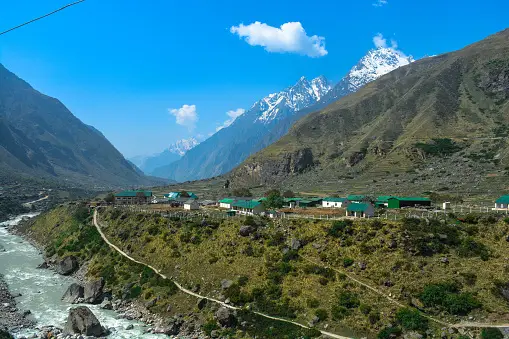Satopanth Swargarohini Trek: Garhwal Himalayas, Uttarakhand
ABOUT SATOPANTH LAKE TREK:
The hypnotic beauty of the glacial lake of Satopanth, a little distance from the religious town of Badrinath in the Chamoli district of Uttarakhand beckons the trekkers with its irresistible charm. This emerald triangle-shaped lake, nestled in the middle of the towering Garhwal regions, provides an atmosphere of an utter tranquility.
The lake is known to have a close correlation with the Hindu mythology, as it is thought that the three corners of the lake resembling a triangular shape are the divine part of the Holy Trinity: Brahma, Vishnu, and Maheshwar. Many pilgrims also walk down to the lake during sun and lunar eclipse weeks to bathe, since this is regarded the most sacred and wish-fulfilling.
Walking over boulders, moraines, glaciers, and ridges with razor-sharp edges, although risky, is captivating on the fabled lake trip path to Satopanth Tal at high altitude. The ever-changing panoramic views of the breathtaking summit vistas are a treat to the eyes. Above a staggering height of 14000 feet, this glacier lake is concealed inside the ridge known as "the road to truth" (Satya Ki Pantha).
The Panch Pandavas with their wife Draupadi of the Mahabharata epic ascended to the heaven by following this arduous path commencing from Mana Village. Folklores still exist at numerous locations along the path. Along with the Neelkanth, Balakun, Parvati, and other peaks, the Chaukhamba ridge towers above this pristine lake. Brahma, Vishnu, and Maheshswar, according to legend, bathe in the lake on special occasions. During the monsoon, pilgrims including intrepid worshippers and Sadhus flock to this lake.
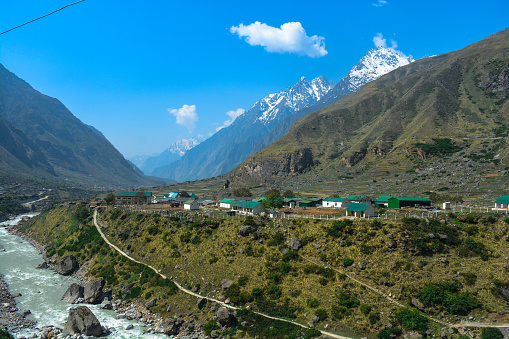
Other tales surrounding the lake have been passed down through generations as part of popular mythology. Some people think that a rare species of birds, known as Gandharvas from heaven, are said to frequent the beaches of SatopanthTaal. They came over to sift through the trash and filth, keeping the lake water clean from negative forces. If you inquire about the hamlet, you will hear additional legends about the terrain at Satopanth, such as how Lord Vishnu's Sudarshan Chakra produced the imprint at Chakrateertha, after which the village was named.
In this area, Swargarohini is not the only significant glacier. You will come across the magnificent Satopanth Glacier and the Bhagirath Kharak Glacier when you trudge higher along the holy river Alaknanda from Mana village. The snow from the Chaukhamba summits feeds both flowing streams of ice. The Chaukhamba Glacier, which rises to 7,068 metres and melts at 3,810 metres, has a 13-kilometer length and is the source of the Alaknanda River. The river subsequently joins the Uttar Ganga at Alkapuri, then the Saraswati at Mana, before entering into the Badrinath basin.
You may also like: Trekking in Uttarakhand: Land of Gods
Satopanth Lake begins at Mana Village, 3 kilometres from Badrinath, and includes BhimPul, a natural bridge made from rocks. The Satopanth Lake Trek is a little treacherous, but the risk is well worth it for the spectacular, bewitching scenery of the verdant landscapes and rugged snow-topped mountains.
This trek will take you along some ethereal scenery namely, the BheemPul, Vasundhara Waterfall and the quaint Mana village. During the journey, you will feel blessed to hear the burbling sound of Vasundhara Falls, while enjoying exquisite views of Himalayan peaks such as Neelkanth, Chaukhamba, and Swargarohini.
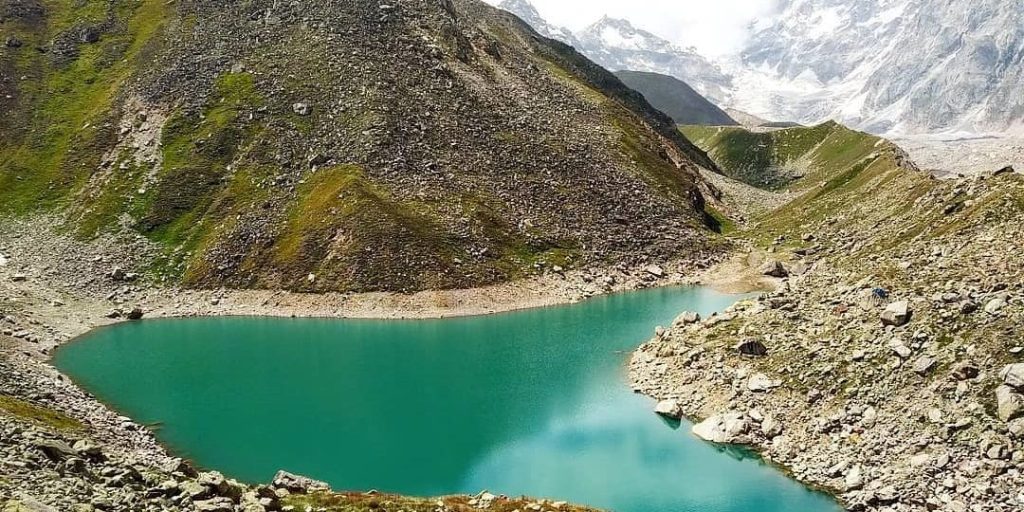
You may also like: Short Treks in Uttarakhand
BEST TIME TO VISIT SATHOPANTH LAKE TREK:
Pre-monsoon, summer months (May to mid Juy):
The snow-capped Mt. Chaukhamba, Mt. Neelkanth, and Mt. Swargarohini can all be seen clearly owing to the bright blue sky. The vista of the star-studded night sky is equally stunning. During the summer, trekkers may experience nature at its best, with gorgeous alpine wildflowers blossoming all around them. The pathways, winding up the Alaknandariver, manoeuver through thick wooded forests and scintillating meadows.
One of the finest seasons to visit Satopanth Lake is during the summer. This incredibly beguiling lake has pure bluish-green waters in the summers. It is revered as sacred and is said to have miraculous properties. Its serene beauty also draws magnificent exotic species that are only seen in this vicinity during the summers.
It's one of the most enchanting summer treks in the Indian Himalayas. The weather remains favorable, with typical summer temperatures ranging from 13°C to 5°C during the day, falling to almost -5°C at night. Even so, adequate winter apparels should be brought because evenings may be rather freezing.
Post-monsoon, autumn months (mid September to October):
The trek to Satopanth is also best done in the post-monsoon season. Autumn displays yet another facet of this region's natural splendour. While the sky remains azure blue, trekkers may stumble upon paths covered with vibrant fall hues. This is the optimal time to immerse in the aesthetic delight of the Alaknanda River as it merges with the Vasundhara Falls.
With the start of snowfall bathing the landscape in a gentle blanket of white, Satopanth Taal entails a mesmeric charm in October. Temperatures range from 5 degrees Celsius during the day to -15 degrees Celsius at night, so it is bitterly cold out there. As a result, it is important to be well-prepared with thermal and thick woollen clothing and dress in layers.
The monsoon and the winters months are not at all recommended as navigation becomes challenging. In the monsoons, the road becomes very slippery and the winters bring about heavy snowfall blocking the roads. Dangerous avalanches are also quite frequent in these months.
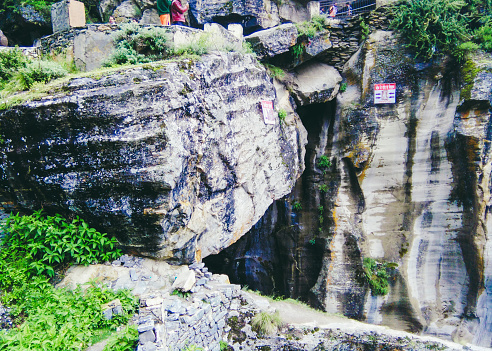
PERMIT TO GET TO SATHOPANTH:
To undertake the Sathopanth Swargarohini trek, you will have to apply for an interline permit from Joshimath. You are supposed to receive your permission from the divisional forest office of Nanda Devi Biosphere Reserve situated in Joshimath. If you are willing to take a guide for this trek, acquiring a permit will be quite easy.
DIFFICULTY LEVEL OF THE SATHOPANTH TAAL TREK AND WHY?
This is not a trek for rookie trekkers. This trek is rated as a difficult and one of the most demanding one. One of the most difficult aspects of this trip is gaining elevation quickly. As you ascend, the oxygen level in the air drops. Severe respiratory complications are also a possibility.
Brace yourself for a rapid dip in temperature in elevated campsites, particularly at night. You'll have to ascend over 2500 feet in one day, and your body may take some time to adjust to the biting cold. Acclimatization often becomes challenging and so you should take adequate rest whenever you feel the need. At night, the temperature might drop to approximately -5 to -7 degrees Celsius. When you go to sleep, wrap yourself in warm clothing and cover every part of your body in woolen garments.
The Satopanth Taal walk involves a lot of steep climbs, and the most typical problem for trekkers is Acute Mountain Sickness. It generally occurs at high elevations as a result of a reduction in the body's oxygen level leading to hypoxia. AMS is similar to motion sickness in that it causes nausea and headache, but it can become hazardous if the initial symptoms are overlooked. As a precaution, it is recommended to descend to a lower altitude as soon as symptoms of AMS appear.
Trekkers must be in decent physical shape and capable of ascending 2000-2500 feet in a single day as the terrain is riddled with boulders, loose rocks, and moraines. It is necessary to remain fighting fit with prior trekking expertise. The final section of the trip, way to the top, is particularly difficult which has only loose moraine soil caused by melting glaciers.
DETAILED SATHOPANTH TREK ITINERARY
Day 1: Rishikesh to Badrinath – Drive for 300 km
On the first day, you will drive by road for approximately 11 hours from Rishikesh to Badrinath. Start early if you want to arrive on scheduled time and have some relaxation for the next day. Take the early bus or begin your journey by vehicle. Pay a visit to the shrine before supper and then retire for the evening to your accommodation.
Day 2: Badrinath to Lakshmi – Trekking for 5 hours
You may either trek to Mana Village from Badrinath or hire a taxi for 3 kilometres. From here, you'll begin your journey to SatopanthTaal. You'll be strolling along the Alaknanda River's left bank. After 3-4 kilometres, you will reach the majestic Vasundhara Falls. Continue trekking through the Falls' gushing waters to the Lakshmi Van campground tugged at a height of 11,900 feet, where you might pitch your tent for the night.
Day 3: Lakshm to Chakrateertha – Trekking for 4 hours
You will trek over the moraines of Dhano Glacier, passing through lush meadows. On the journey, focus on areas of vibrant wildflowers and sierra of the Bhagirathi peaks. You will reach Sahasradhara at the completion of the walk, known for its limestone stalactite monoliths.Beneath these incredible structures many river streams flow, earning it the name Sahasradhara. It signifies a "thousand-fold spring." On a clear day, one may see the massive Neelkanth range. The Chakrateertha campground is about a half-hour hike away from here.
Day 4: Chakrateertha to Satopanth and back – Trekking for 8 hours
This day's climb commences on a smooth level and easy incline before getting steeper and steeper as you approach the summit. Boulders and moraines dot all the way to the top, where you can see the immaculate lake for the first time. Prepare to be winder-struck with anunsurpassable view, with Neelkanth heaving in the backdrop, Swargarohini on your left, Chaukhamba directly ahead, and Balakun to your right. Return to Chakrateertha once you've finished photographing and enjoying the site.
Day 5: Chakrateertha to Badrinath via Mana, Trekking for 6 hours
Descend the very same trail to reach Mana village in around 6 hours. If you are too tired, as you will most likely to be, you may hire a taxi or jeep straight to Badrinath.
Day 6: Badrinath to Rishikesh
You can book a bus or a cab returning to Rishikesh on the last day of your tour to continue your journey back home. Before leaving Uttarakhand, you may buy up some necessities and pick up some gifts and talisman for friends back home at either Badrinath or Rishikesh.



